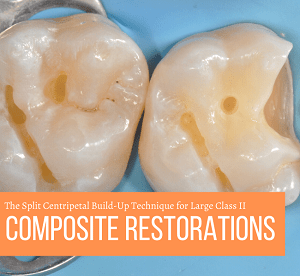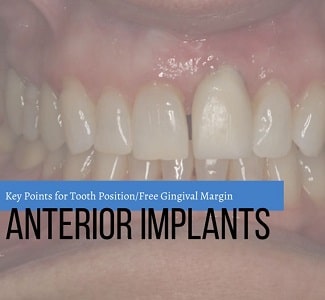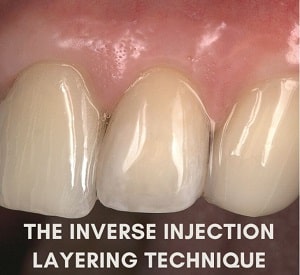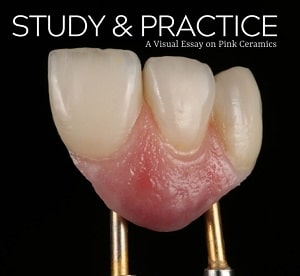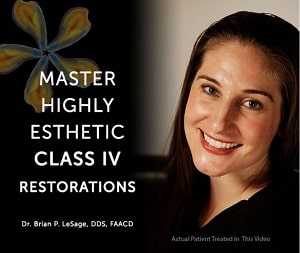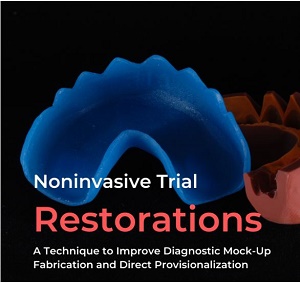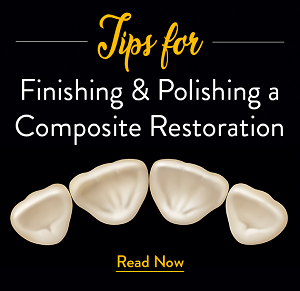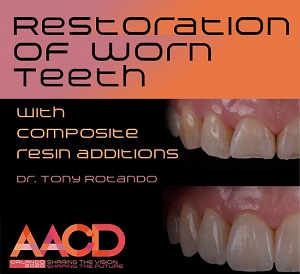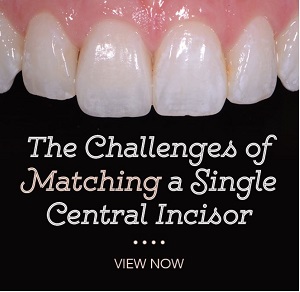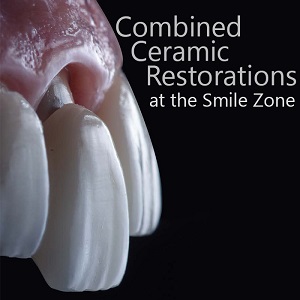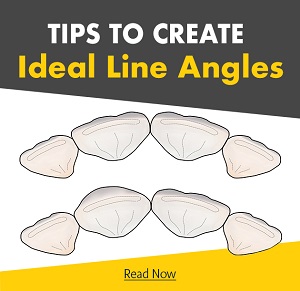Midline Archive
2024
January 2024

†
How the General Dentist and a Multidisciplinary Approach Can Achieve an Excellent Clinical Outcome
By DaniŤle Larose, DMD, AAACD
Explore the optimal replacement of a single anterior tooth through the collaborative efforts of a cosmetic dentist and specialist. This article delves into managing hard and soft tissue challenges, emphasizing the delicate balance between esthetics, functionality, and durability. This case study highlights the successful partnership between a cosmetic dentist and a specialist, resulting in the best possible outcome for the patient. Read†how the impactful influence of seamless teamwork, attention to detail, and patient education can transform a person's self-esteem.
April†2024
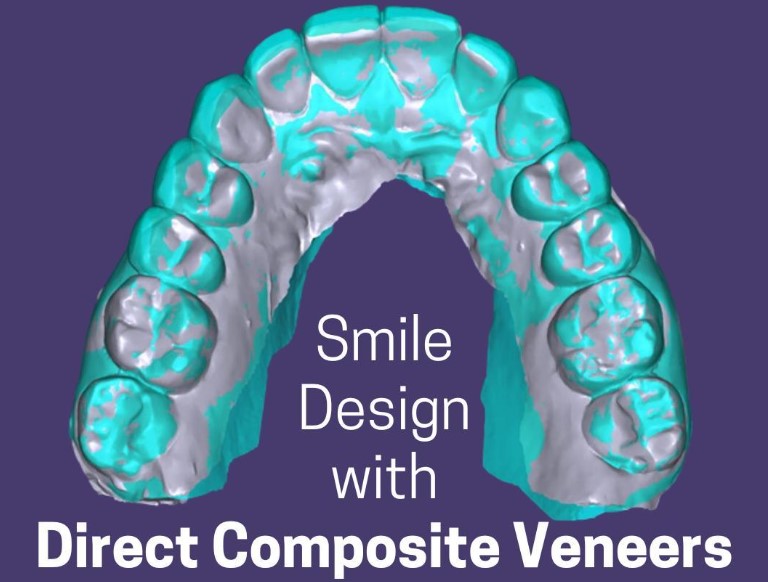
†
SMILE DESIGN with DIRECT COMPOSITE VENEERS
By David Whalen, DDS, AAACD
Direct composite veneers are an excellent choice for patients and clinicians because they provide an appealing blend of esthetics and minimal tooth modification. The ability to be conservative gives an opportunity to enhance the functional aspects of one's smile while reducing the risk of future case failure by preserving tooth structure. In addition to achieving the desired esthetic outcome, a smile design case is also an opportunity for enhancing functional aspects. Completing a smile design case with direct composite veneers is a testament to the innovation and excellence in modern dentistry, offering patients a beautiful and functional smile that inspires confidence and satisfaction.
Discover how Dr. David Whalen navigated the complexities of time constraints and intricacy, achieving advantageous outcomes through meticulous planning and execution while listening to his patient.†
2023
January 2023
Restoring Pink and White Esthetics | Case Type III
By Rita A. Tempel, DDS, AAACD
Finding just the right Case Type III (tooth replacement) for AACD Accreditation can be a challenge. When a difficult case presents itself, it is important to treatment plan, document, and treat the case with ideal principles of smile design. Collaboration between the restoring cosmetic dentist, master ceramist, implant surgeon, and patient is the key to success in transforming a smile. Most importantly, using provisionals or restoration prototypes with the appropriate emergence profiles and interproximal contact points will influence soft tissue contours, resulting in ideal pink and white esthetics.
In cosmetic dentistry, creating a harmonious smile begins with a well-thought-out plan. The AACD photographic series, diagnostic casts, a facebow, and a dentogingival or pink and white diagnostic wax-up are effective tools for analyzing as well as communicating smile design principles with a patient. Since gingival contours have a direct impact on pink and white esthetics, the wax-up is the first step in smile rehabilitation.
April 2023
Combining CAD/CAM and 3D Printing Technology to Develop an Esthetic Full-Mouth Rehabilitation with Lithium Disilicate Pressed Ceramics
By Anabell Bologna, DDS, CDT & Rafael Laplana, DDS
Restorative materials, adhesive, and digital technologies have made possible a conservative philosophy of dental preparation to be implemented, allowing dental professionals to preview the result before final restorations are placed. This AACD Midline shares novel concepts of bonded indirect restorations and illustrates how restorative and technological advances improve communication and collaboration among patients, dental teams, and laboratory technicians.
It emphasizes the importance of facially generated treatment planning in improving facial harmony and proportions. We hope you enjoy and appreciate this visually stunning excerpt of Dr. Bologna and Dr. Laplana's original article published in the Journal of Cosmetic Dentistry.
June 2023
Composite Resins: The Current State of the Art
By Weber Adad Ricci, DDS, MSc, PhD
Composite resins are excellent and versatile rehabilitation materials because of their ability to adhere well to dental structures and be utilized by clinicians directly in patientsí mouths. Clinicians should know each materialís optical properties, fracture resistance, wear resistance, and chemical stability. †
Armed with this information, they can select the most appropriate composite resins for the case-specific scenarios to achieve highly functional, long-lasting, and esthetic results for their patients. This article discusses the advantages and disadvantages of the constituent elements of the different resin restorative options.
October 2023
State-of-the-Art Patient-Centered Treatment & Management of Tooth Wear
By Didier Dietschi, DMD, PhD, Priv-Doc
Tooth erosion, a widespread issue, stems from various causes, such as dietary habits, medical conditions, and side effects. Detecting early signs of tooth wear is crucial due to its potential long-term impacts on health and appearance. Fortunately, contemporary methods offer effective solutions, especially for moderate to advanced cases. This article introduces a patient-centric approach, rooted in biomechanical principles, to address tooth wear, emphasizing the importance of early intervention and modern adhesive techniques for successful management.
2022
December 2022
Updated Clinical and Technical Protocols for Predictable Immediate Implant Placement
By IŮaki Gamborena, DMD, MSD, FID
Yoshihiro Sasaki, CDT
Markus B. Blatz, DMD, PhD
This article introduces a comprehensive and updated protocol for immediate implant placement and describes critical steps that apply to single, multiple, and adjacent implants. The complete protocol described and illustrated includes the following for long-term functional and esthetic clinical success:
- Treatment planning to execution
- A multiyear follow-up
- Updated guidelines
- Immediate implant procedures
A meticulous realization of the crucial steps and techniques described in the article is vital to achieving these outcomes predictably and on a routine basis.
October 2022
Esthetic Overlays | Patient visualization of esthetic procedures
By Matthew R. Roberts, CDT, AAACD and James Fondriest, DDS, FACD, FICD
Patient visualization of esthetic procedures is a fundamental step in the treatment communication process. Historically, the use of direct mockups has been the best way for patients to visualize outcomes prior to esthetic treatment, but that requires a great deal of chair time and artistic ability. More recently, digital photography and software programs have been employed, as have two-dimensional line drawings placed over photographs. A silicone matrix of a diagnostic wax-up using one of the liquid provisional materials can be tried over existing teeth, but is messy to clean up. Esthetic overlays, composed of milled polymethyl methacrylate and based on a facially generated digital design, fit over existing dentition quickly with no cleanup and are a quick and effective way of showing a patient what is possible with cosmetic treatment. This article discusses the process by which these overlays are fabricated and describes a clinical case in which their use helped a patient overcome his concerns about final treatment results.
August 2022
A Revolution in Composite Smile Makeovers | Paste Composite Resin Pre-Separation Within the Stent Full Digital Planning 10-Teeth in Under 90 Minutes
By Dr. Thomas Sealey of SmileFast
Imagine being able to confidently apply composite paste resin on up to 10 teeth in only 60-90 minutes and transform your patientsí smiles with beautiful and predictable composite veneers. This is now a reality with the SmileFast system. SmileFast is the sensational evolution of stent-based matrix smile transfers, which has swept the UK and Australia and now comes to the US and Canada. You no longer need to struggle with the every-other-tooth technique and compromise the quality and strength of your restorations by using the inferior flowable composite methods. Read the full article by Dr. Thomas Sealey to learn about this novel stent and application technique that you can use in clinical practice to restore multiple teeth easily and predictably in a reduced timeframe with enhanced strength and superior esthetics.
July 2022
Minimally Invasive Full-Mouth Reconstruction with V-Shaped Veneers | In Treatment of Bulimia-Induced Dental Erosion
By Dr. Łukasz Lassmann
The incidence of bulimia appears to be increasing, but diagnosing it can be difficult, especially because many patients are too embarrassed to admit to having it. This disorder should be differentiated from occlusive, nutritional, and gastrointestinal problems, as well as from numerous parafunctions. The correct diagnosis allows the dental clinician to choose a treatment that should solve all of the patientís esthetic and functional problems with a minimum number of procedures. With a minimally invasive approach in erosive patients, it is necessary to know the decision criteria for increasing the vertical dimension of occlusion and for selecting a preparation technique, type of prosthetic restoration, type of ceramic, and method of cementation.
June 2022
Considering a Papilla Regeneration Technique | Closing a Diastema with Direct Composite
By David J. Clark, DDS
Many esthetic procedures we routinely provide can improve the tooth's structural integrity and facilitate better health of the surrounding gingiva. Diastema closure, at least in the anterior sextant, rarely gives either of these secondary benefits. Unfortunately, the esthetic diastema closure often results in significant compromises in the root/crown architecture and increased plaque retention with subsequent deterioration in periodontal health and poor ďpinkĒ esthetics. Read on for more details!
April-May 2022
A Conservative Approach to Managing a Fractured Central Incisor
By Abelardo BŠez, DDS, MS; Gerardo DurŠn, DDS; Diego De Nordenflycht, DDS
This interactive web story†Dr. BŠez, Dr. DurŠn, and Dr. Nordenflycht, describe†a conservative approach to managing a fractured central incisor with impaired esthetics, using composite resin to achieve appropriate shade matching and a natural appearance.
Fragment reattachment, gingivoplasty, a freehand direct veneer, and morphological correction of the adjacent tooth were all employed to correct the consequences of this common dental injury. Given the conservative and reversible nature of this method, composite resin should be considered the first choice for esthetic reattachment procedures.
March 2022
Properly Contoured and Tight Contacts in the Maxillary Anterior Dentition
By Ingrida Ivance, DDS, AAACD
The clinical case documented in this article from the AACD's Journal of Cosmetic Dentistry demonstrates an approach to direct composite veneers with the buildup of proximal contact areas achieved using the individualized matrix technique. Working in a clinical setting, this matrix technique facilitates the accurate buildup of physiological proximal contact areas without overhangs of composite resin in the cervical region and with a close fit at the margins. This technique gives a high degree of reliability and produces controlled, predictable results.
February 2022
Restoring Endodontically Treated Teeth
By Priya Tirumalasetty, DDS, AAACD
In this 8-lesson course, you will learn how to restore endodontically treated teeth. Learning Objectives:
Understand basic concepts and evidence-based dentistry.
Learn how to prevent coronal microleakage.
Understand how to evaluate what is remaining, before and after endodontic treatment.
Learn about posts as well as direct fiber and resin post and core.
January 2022
Synergy Between Minimal Intervention and Digital Workflow for Highly Esthetic Composite Restorations
By Matthew Yeung, DDS, Matthew Blackwell, DMD, Robin Blackman, DMD, Kevin Shepherd, DMD, Courtney S. Babb, DMD, Christian Brenes, DDS, MS, and Mario F. Romero, DDS
Recent improvements in digital scanners and printers, along with better accessibility and affordability, have enabled clinicians to more effectively integrate digital workflows into their practices. Virtual smile design has revolutionized the field of esthetic dentistry, with patients and clinicians able to visualize a proposed smile design superimposed on a photograph of the actual smile to create a digital mock-up. This mock-up can then be exported as a stereolithography file to print three-dimensional models. This clinical report details how minimally invasive dentistry was performed using a combination of virtual smile design and composite resins to treat maxillary central incisal edge discrepancies.
2021
December 2021
The Successful Esthetic Rehabilitation Through Simulations
By Dr. Jeff Trembley
The most critical factor to communicate to the laboratory for managing control over an esthetic rehabilitation case is the dentofacial smile design. Imagine the predictable restorative success we all could attain in the esthetic zone if we provided the laboratory with the tooth arrangement and form; the ratio of tooth width to height; and illustrate how these relationships are perceived against the unique facial properties of each patient. If these metrics are truly what determines successful esthetic cases, then the burden to communicate those relationships to the ceramist would lie with the practitioner, without error.
October 2021
How I Helped a Former Professional Basketball Player Regain Her Confidence
By Dr. Armand Bedrossian
She made history in 1978 as a member of the Milwaukee Does, playing in the first all-female professional basketball game against the Chicago Hustle in a new league called the Women’s Professional Basketball League (WBL). Forty-three years later, Gerry Lynn Booker’s trailblazing and pioneering spirit looks to digital dentistry to restore her smile and regain the confidence she once showed on and off the basketball court. When it came time to consider all the pros and cons of her restorative options, she and her clinician didn’t hesitate to choose a solution that was both definitive and esthetic.
September 2021
Managing Implant Esthetics
By Dr. Pio Modi
When it comes to managing implant esthetics, there is much to consider. From planning to implant placement to managing tight spaces and more, Pio Modi, DDS, in his new 9-lesson course, "Managing Implant Esthetics" has you covered from start to finish. You'll learn: Key difference in implants vs. teeth to help with treatment planning considerations; Socket types and site limitations when placing anterior implant and considerations for immediate implant placement; CT guided stents, gold standard or limitations? And much more.
August 2021
Minimally Invasive Full-Mouth Reconstruction with V-Shaped Veneers In the Treatment of Bulimia-Induced Dental Erosion
By Dr. ŇĀukasz Lassmann
The incidence of bulimia appears to be increasing, but diagnosing it can be difficult, especially because many patients are too embarrassed to admit to having it. This disorder should be differentiated from occlusive, nutritional, and gastrointestinal problems, as well as from numerous parafunctions. The correct diagnosis allows the dental clinician to choose a treatment that should solve all of the patient’s esthetic and functional problems with a minimum number of procedures. With a minimally invasive approach in erosive patients, it is necessary to know the decision criteria for increasing the vertical dimension of occlusion and for selecting a preparation technique, type of prosthetic restoration, type of ceramic, and method of cementation.
July 2021
Digital Photography: An Essential Component of Clinical Success
By Andi Jean Miro, DDS, & Ilon Choai, DDS
There are a variety of cameras on the market today, and new practitioners can be overwhelmed when trying to choose the one that is best suited to their needs. This article describes how to document a case utilizing high-quality dental photographs for optimal treatment planning, documentation, and self-evaluation. It outlines the fundamental principles to understand when using a camera for dental photography and provides information about camera setups and accessory options.
June 2021
Excessive Gingival Display Managed with Lip Repositioning, Esthetic Crown Lengthening, and Veneers
By Kenneth Valladares, DDS, CDT, and Paula Vargas, DDS, MBA
Excessive gingival display, also referred to as gummy smile, can be managed by a variety of treatment modalities, depending on the etiology. Mild and moderate gummy smiles can be successfully treated by periodontal plastic surgery. However, for excessive gingival display as in vertical maxillary excess (VME) II or III cases with 5 to 8 mm or more of gingival exposure, this procedure is not enough. Many patients decline the more invasive Le Fort surgery and opt for a less invasive surgical lip-repositioning procedure. Therefore, surgical lip repositioning combined with crown lengthening is suggested as an effective and predictable procedure to reduce gingival display.
May 2021
Direct Posterior Restorations: Occlusal Anatomy & Stain
By Sandra Hulac, DDS, FAACD
Reproducing occlusal anatomy can be a challenging step in restoring the posterior teeth. Watch as Dr. Sandra Hulac walks you through the use of line guides and when and how to use stain on your posterior restorations. It is always worth asking your patients about adding stain to be sure you are on the same page about the esthetics of the restoration.
April 2021
Maximizing Esthetics with Minimally Invasive Feldspathic Veneers
By Somkiat Aimplee, DDS, MSc, FACP, AAACD; Pannapa Sinthuprasirt, DDS, MMedSci, PhD; Andres Acevedo, MDC; Alvaro Blasi, DDS, CDT; Aram Torosian, MDC, CDT; Gerard J. Chiche, DDS
The keys to obtaining predictable and consistent results in esthetic treatment are diagnosis, smile design, treatment planning, team communication, and understanding patient expectations. Digital technology can facilitate this important¬ communication with the patient.
March 2021
When to Place the Implant
By Robert James Stanley, DDS
Dr. Stanley discusses the digital prosthetic planning protocol for implant esthetics as he breaks down the discussion for anyone who places, restores, or maintains dental implants. No matter your role, Dr. Stanley aims to ensure great outcomes for your patient, focusing on immediate implants, bone loss after extractions, and why we should make every effort not to flap.
February 2021
Interdisciplinary Treatment Planning and Digital Workflow: Integrating Digital Smile Design and Orthodontic Aligners
By Rafael de Liz Pocztaruk, PhD; Newton Sesma, PhD; Karina Pintaudi Amorim, DDS; Christian Coachman, DDS, CDT
An interdisciplinary approach in dentistry is important for comprehensive, complete, and effective patient care because patients are becoming more discriminating, increasing demands for more accurate diagnoses and more detailed treatment plans.
January 2021
The Lumisynchroma Layering Technique
By Rhodri Thomas, DDS
Natural teeth are complex, polychromatic structures that can be challenging for clinicians to restore while¬ simultaneously reproducing the nuances perceived by the eye. Although custom shade tabs and other¬ techniques have improved the direct composite restoration process, it is still incumbent upon dental artists to design a restoration using tooth-specific composite colors applied in varying thicknesses and¬ locations.
2020
December 2020
Overcoming and Preventing Surgical Grafting Complications
By Matt Young, DDS
Surgical grafting complications sometimes occur after socket grafting procedures. How can we overcome these complications, or better yet, prevent them in the future?
November 2020
My Jaw Joint Clicks: Temporomandibular Joint Overview
By Jim McKee, DDS
Many patients who are seeking esthetic enhancements also present with occlusal issues. We often assume occlusal issues are due to improper tooth position; however, many tooth position problems¬ are the result of structural changes in the temporomandibular joints.
October 2020
Management of Cracked Teeth
By Jeffrey Lineberry, DDS, AAACD
The New York Times recently referred to the "epidemic of cracked teeth" resulting from the stress and trauma associated with COVID-19. From poor sleeping habits to lack of ergonomics in work-from-home office set-ups, the author of the article, a dentist in Manhattan, claimed she has seen more tooth fractures in the last six months than she had in the previous six years.
September 2020
Asystematic Approach to the Class IV Restoration
By Camille J. Zelen, DDS
The restoration of a Class IV fracture is a commonly encountered challenge in dentistry. This clinical occurrence, often the result of a traumatic event, can interrupt an already busy schedule. The patient, unsure of the prognosis, may be somewhat fearful or anxious upon presenting for treatment. Having a step-by-step procedure in place for this type of situation enables the treating dentist to deliver a predictable result that is both clinically sound and of optimal esthetics.
July 2020
A Histo-Anatomic Analysis of Color: Dentin Anatomy and the Principle of Scattering
by Javier Tapia Guadix, DDS
In order to create the most natural-looking restorations, a thorough understanding of the histo-anatomic structures and light interaction of the natural dentition is key. While we generally have a great understanding of the external anatomy of teeth, gaining that same level of understanding of the internal anatomy is still not easy for dental practitioners.
There are several techniques that allow us to analyze the relationship between the dentin anatomy and the enamel anatomy. Selective enamel dissolution allows enamel to dissolve in hydrochloric acid, giving us a true vision of the anatomy of the dentin. Becoming familiar with the relationship between convexity and concavity will assist us in creating the most natural-looking restorations.
June 2020
The Split Centripetal Build-Up Technique for Large Class II Composite Restorations
by Gaetano Paolone, DDS,
Salvatore Scolavino, DDS,
Nitzan Bichacho DMD
There are several layering approaches for Class II restorations. The most commonly used are horizontal layering (HL) and the centripetal build-up technique (CBT).¬ The latter is a proven technique that, in order to simplify restorative and modeling procedures, converts a Class II cavity design to a Class I through the application of a thin composite interproximal wall. The CBT defines the perimeter of the restoration and, once it is completed, the clinician has the advantage of a Class I cavity design.
This short video presents a modified version (split CBT) for medium-to-large Class II cavities in which multiple thicker, separated interproximal increments are used to reduce the number of adhesive surfaces, minimize the shrinkage issues of resin-based restorative materials, and provide proper anatomical information for occlusal modeling.
May 2020
Anterior Implants: Key Points for Tooth Position/Free Gingival Margin
Jeffrey Babushkin, DDS, AAACD
Creating esthetic implant restorations that blend seamlessly with the neighboring dentition can be one of our greatest challenges. In 2001, Dr. John Kois identified five pretreatment diagnostic keys to help ensure esthetic results. Watch as AACD Accredited Member, Jeffrey Babushkin, DDS, AAACD, explores the first of these diagnostic keys in the context of two different high-risk cases. See how Dr. Babushkin improves biology to change gingival margins in order to ensure an esthetic result.
April 2020
The Inverse Injection Layering Technique
Douglas A. Terry, DDS, AAACD
John M. Powers, PhD
Markus B. Blatz, DMD, Dr med dent habil, PhD
The concept of generating a variety of parts for different manufacturing solutions using an injectable molding technique has existed for more than a century. Since its evolution, injection molding has been used by designers and engineers for myriad applications with a host of materials, including glass, metals, confections, elastomers, and thermoplastic and thermosetting polymers to fabricate a variety of complex shapes with high dimensional precision.
The advances in material science and adhesive technology have allowed this concept to be utilized with highly filled next-generation flowable systems. This first part of a planned two-part article provides a simplified, precise, and predictable method for developing natural esthetic composite restorations using this injectable concept with highly filled flowable materials.
March 2020
Begin With the End in Mind: Preparing Teeth for Predictable Results
By Zachary Sisler, DDS
Preparing anterior teeth for esthetic restorations can be a daunting task for any clinician. In order for the dental laboratory technician to create an ideal restoration, the dentist must be able to prepare and contour a tooth to ensure adequate reduction has been allotted.
The use of preparation guides can increase the efficiency and efficacy of the preparation appointment by ensuring the process is calculated and accurate. It is important to remember that in order to achieve exceptional esthetic results, the dentist must begin with the end in mind. By beginning to visualize the end result during the treatment-planning phase, he or she can establish a diagnostic wax-up to act as a blueprint for the patient's functional esthetic matrix.
February 2020
Study & Practice: A Visual Essay on Pink Ceramics
By Jungo Endo, RDT
Creating lifelike restorations and gingiva requires a great deal of knowledge about tooth and gingiva morphology and color. It is necessary to study the different layers and structure of natural teeth and soft tissue and practice replicating them to achieve precise results.¬ Studying the forms and color of natural teeth and soft tissue will help all patients, including the many who have suffered trauma to the teeth and gingiva.
Patients who have suffered from trauma have been dealing with emotional and sometimes physical pain for years, with loss of bone and gingiva. The patient featured in this visual essay was unhappy with her existing restoration. The color of the restored gingiva did not match her natural soft tissue color. By harmonizing the pink and the white with her natural color, natural-looking and beautiful restorations were created.¬ Today's¬ patients have high esthetic demands, which requires us to push the envelope in creating periodontal tissues and teeth.
January 2020
Master Highly Esthetic Class IV Restorations
By Dr. Brian P. LeSage, DDS, FAACD
SPONSORED BY Tokuyama
Creating a Class IV restoration that blends in naturally with the surrounding tooth structure of the patient is one of the more challenging procedures dentists commonly face. It takes skill, creativity, an impeccable sense of esthetics, and a composite capable of delivering life-like results.
In this video, Dr. Brian LeSage, founder of the Beverly Hills Institute of Dental Esthetics, shares his techniques to achieve exquisite Class IV restorations using Estelite Omega. Estelite Omega is a premium polychromatic composite system developed by Tokuyama Dental in collaboration with the world-renowned cosmetic dentist Dr. Newton Fahl, Jr. With only 11 composite shades, dentists can achieve exquisite results, and re-create tooth anatomy and¬ polychromicity down to the smallest details of tertiary¬ anatomy¬ and¬ maverick coloring.
2019
December 2019
Noninvasive Trial Restorations: A technique to Improve Diagnostic Mock-up Fabrication and Direct Provisionalization
ByJo√£o Malta Barbosa, DDS, MSc
Gonçalo Bártolo Caramês, DDS, MSc
Ronaldo Hirata, DDS, MSc, PhD
João Caramês, DDS, PhD
A. Alper Comut, DMD, DMSc
The noninvasive trial restoration (NTR) serves as a diagnostic and communication tool that allows 3D information to be transferred from the diagnostic wax-up to the patient's mouth. If esthetic alterations are required or requested by the patient, the silicone index can be poured and the alterations produced over a new model, saving the original diagnostic wax-up design. Together with clinical photographic documentation, pouring the NTR index improves patient-clinician-laboratory communication, because a 3D record representing the evolution of the esthetic design is saved and can be revisited at any time during the treatment.
The incorporation of noninvasive trial restorations is a desirable step for elective restorative treatments. Achieving a high level of accuracy and precision should be a goal of all the steps, including those involved in fabrication of the NTRs themselves, as they will provide information when decisions are made regarding possible invasive adjunctive treatments.
November 2019
3 Tips for Finishing and Polishing a Composite Restoration
By James H. Peyton, DDS, FAACD
It's easy to run into trouble due to aggressive and haphazard polishing techniques. With an organized and minimally invasive protocol for finishing and polishing, you can improve‚ÄĒand even save‚ÄĒyour anterior composite cases.
Think of the finish, polish, and texture as the tooth‚Äôs ‚Äúfingerprints‚ÄĚ. If the adjacent teeth do not display similar characteristics, then‚ÄĒeven if the contours are excellent‚ÄĒthe case is lost.
These 3 tips can help you define an improved protocol for finishing and polishing your next restoration.
October 2019
Restoration of Worn Teeth with Composite Resin Additions
By Dr. Tony Rotondo
The patient in this video presented wanting an aesthetic improvement and natural look. She was aware of the localized wear on her maxillary anterior teeth, and the wear, although less so, of her mandibular anterior teeth.
Her treatment plan involved orthodontics to align her moderately crowded anterior dentition, improve the maxillary arch form, align gingival levels, and create space for restorative material to be placed on the maxillary anterior teeth.
The clinician behind this case, Dr. Tony Rotondo, is a featured educator at the AACD Annual Scientific Session in Orlando, Florida, April 22-25, 2020. He will be presenting two courses, including a special invitational presentation open to AACD Accredited members only called Adventures in Composite Resin: Using composite resin in the management of complex cases‚ÄĒtechniques, applications, and failures.
September 2019
Restoring Tetracycline-Stained Teeth with Feldspathic Porcelain Veneers
By David Leo Finkelstein, DDS & John R. Calamia, DMD
Proper treatment planning enables execution of the most appropriate restorative techniques, preservation of healthy tooth structure, and realization of esthetic expectations. A detailed and comprehensive treatment plan is necessary.
Collaboration among the dentist, laboratory, and patient to create an efficient roadmap from case presentation to delivery is a must.
This step-by-step account of how communication, diagnostics, and collaborative techniques combined to successfully restore tetracycline-stained teeth.
August 2019
The Challenges of Matching a Single Central Incisor
By Dr. Margarita Aleksanyan, DDS, AAACD
Awareness and appearance is of utmost importance to patients today. With composite restorations being used for Class IV fractures, there is a tendency for discoloration and irregular contour and shape.
This Midline shows a successful AACD Accreditation Case, Type II: One or Two Indirect Restorations. If you're pursuing AACD Accreditation, you won't want to miss this.
July 2019
Transitional Bonding for Severely Eroded Dentition
By Kevin M. Brown, DDS, AACD
Advances in every facet of dentistry have led to the reconstruction of worn and eroded teeth. From stronger materials to more efficient techniques, dentists and patients have never been happier with reconstructive procedures.
This Midline shows a case of major erosion of the teeth. Throughout the case, you will see the transformation of the patient's smile through every step in the process.
June 2019
Breathing Vivid Life into Our Creations
By Yuji Tsuzuki, CDT
By combining artistic sensibility and knowledge of functional essentials, we can maximize the use of various esthetic materials to resolve the challenges we face when creating restorations that mimic multiple facets of natural teeth.
This Midline outlines multiple cases that use a multifaceted approach to create a natural, but restored, smile.
Throughout the various cases, artistic elements are brought forth to make sure the restorations achieve the most natural look possible.
May 2019
Invisalign Go treatment is a simple, streamlined, fully digital way to give patients the smile they desire. Invisalign Go allows you to treat mild to moderate malocclusion cases with outcomes you can count on through enhanced movement predictability. Offering up to 20 aligners and movement from the second pre-molar to second pre-molar, Invisalign Go gives you the ability to expand arch width and align anterior teeth prior to restorative treatment.
Dr. Justin Leath, Rochester Hills, MI, had a patient present with minor rotating canines and minor crowding in the lower arch ‚Äď see how he used Invisalign Go to deliver a beautiful smile and better oral health for his patient.
April 2019
Clinical Efficacy & Sensitivity of In-Office Tooth Whitening With & Without Light Treatment Combined With At-Home Bleaching
By Joe C. Ontiveros, DDS, MS; Magda S. Eldiwany, DDS, MS; Dianna M. Arriaga, DDS, MEd;
Rose-Marie Fay, DDS, MS; Maria D. Gonzalez, DDS, MS; Natalie A. Pereira Sanchez, DDS;
Marilia M. Sly, DDS, MSD; Rade Paravina, DDS, MS, PhD
This study compares clinical in-office bleaching of 6% hydrogen peroxide with and without light, plus three nights of treatment with 16% carbamide peroxide. Visual and instrumental color measurements were performed on 77 subjects immediately, one week, and two weeks after in-office bleaching.
*Find out which method had superior visual results. Plus earn FREE CE, if you are an AACD member. 
March 2019
Maximizing Esthetics and Function of FRC Posts and Full Composite Crowns in Endodontically Treated Teeth
By†Gerardo DurŠn, DDS, MSc; Ismael HenrŪquez, DDS;†
Josť Pablo Tisi, DDS; and Abelardo BŠez, DDS, MSc
Ensuring the esthetics and functional longevity of endodontically treated posterior teeth can present dentists with complex challenges that, to date, have been addressed using various therapeutic alternatives.
This Midline details one solutionó a conservative, step-by-step technique for rehabilitating an endodontically treated premolar with wide root canals. It illustrates an indirect method for creating an anatomical fiber-reinforced composite post in combination with a full-coverage composite resin crown restoration.
February 2019
Combined Ceramic Restorations at the Smile Zone
By Mirela Feraru, DMD; Stefano Inglese, MDT and Nitzan Bichacho, DMD
Many adult patients present with a combination of old crowns at the smile zone that need to be replaced and adjacent teeth that require esthetic treatment. The final esthetic result depends on the treating team’s ability to efficiently communicate during the different steps.
The following clinical case report describes an accurate, controllable, and efficient operative protocol implementing an interdisciplinary approach, together with the step-by-step laboratory workflow.
January 2019
"Get in Line": Tips to Create Ideal Line Angles
by James H. Peyton, DDS, FAACD & Brian J. Gilbert, DDS, AAACD
Proper placement of line angles is critical to achieving the correct anatomic form and primary anatomy of a restoration. Line angles that are "in line" will lead to a final restoration that is anatomically correct. However, correcting line angles on a composite restoration can be challenging.
These tips suggest ways to ďget in line,Ē achieve ideal line angles, and start creating beautiful composite restorations today!
Discover the jCD†Here
Facebook Feed
†





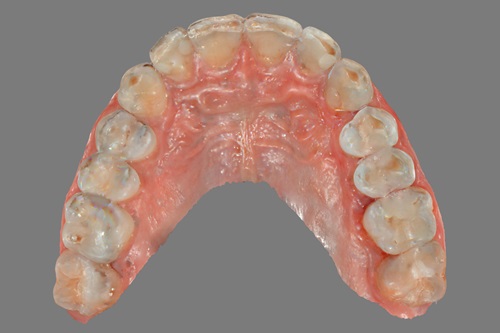

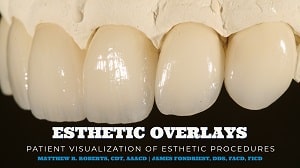
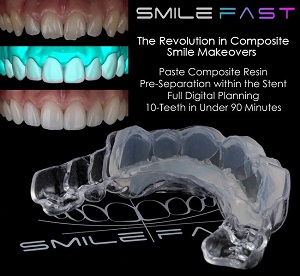

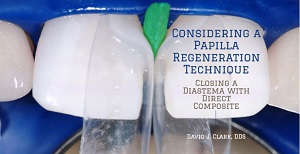

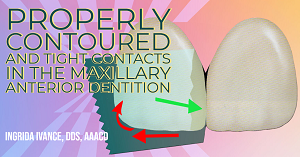
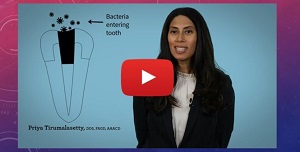
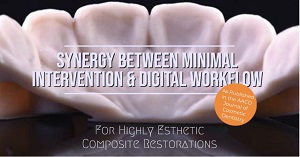
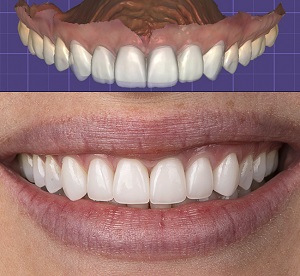
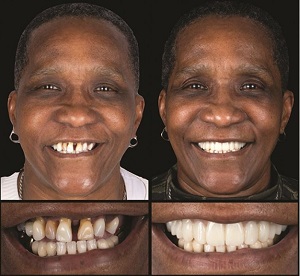
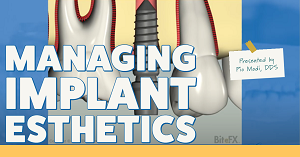
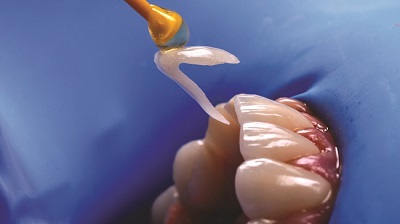



_1846605.png)
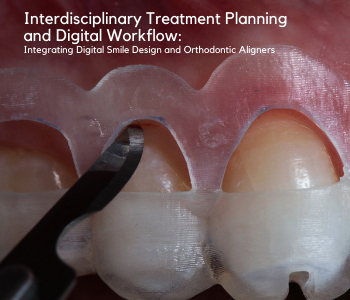
.png)






